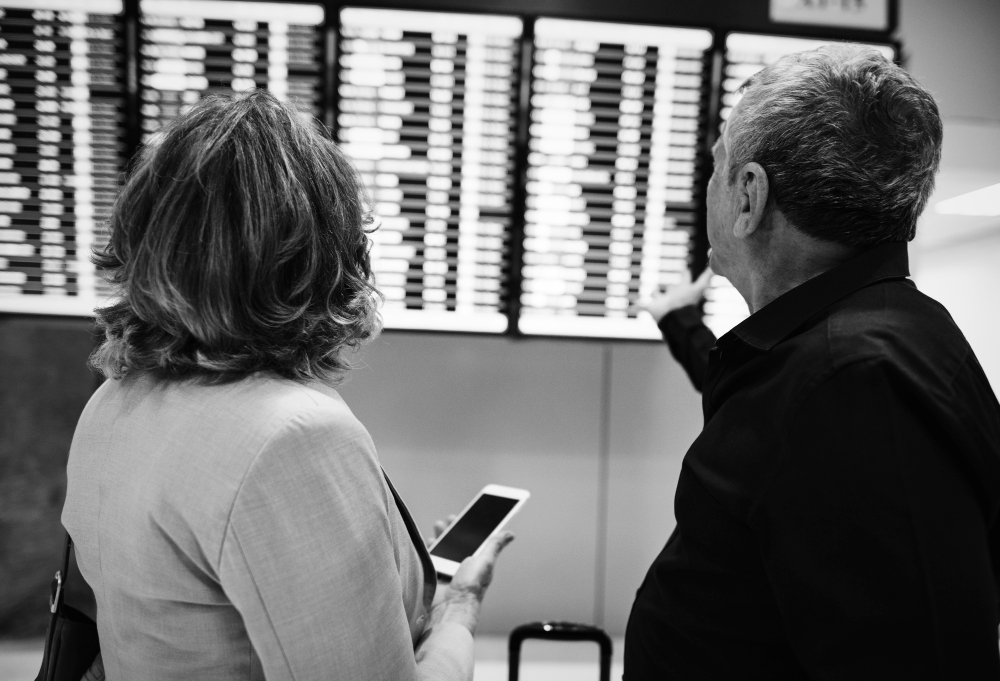Cutting Airport Wait Times: A COO’s Guide to Transforming Passenger Flow with Smart Tech

Few experiences test a traveler’s patience like long queues, confusing signage, delayed baggage, and sluggish security lines at airports. While aviation technology has evolved rapidly in the skies, the passenger experience on the ground still suffers, especially during peak hours. For Chief Operating Officers (COOs) responsible for airport operations, this isn’t just a customer service issue—it’s a cost and efficiency crisis.
From missed connections to reduced retail revenue, poor passenger flow affects bottom lines, airline partnerships, and even airport ratings. The good news? Technology is changing the game, and visionary COOs can harness it to turn their airports into seamless, hyper-efficient transit hubs.
In this article, we take a deep dive into why airport wait times persist, the technologies that can dramatically reduce them, and how Virtual Delivery Centers (VDCs) help COOs implement these solutions faster and smarter than ever before.
The average passenger spends 45–120 minutes in transit through a modern airport. Most of that time is wasted due to avoidable inefficiencies. Let’s break down the core problem areas:
1. Check-In Congestion
Even with self-service kiosks, many passengers queue for check-in due to baggage drop-off, document verification, or unfamiliarity with the system.
2. Security Screening Delays
Security checkpoints remain one of the most consistent pain points. Long queues form due to outdated scanning systems, underutilized lanes, and lack of real-time coordination.
3. Immigration and Customs Bottlenecks
In international terminals, a lack of digitization and data pre-verification leads to processing slowdowns. Manual inspection is still too dominant.
4. Boarding Gate Clusters
Inefficient crowd management at boarding gates leads to unnecessary congestion, impacting both passenger experience and aircraft turnaround times.
5. Poor Passenger Flow Visibility
Airports often lack real-time data on how passengers move through terminals, making it hard to predict and manage crowding dynamically.
1. Biometric Checkpoints
Facial recognition and iris scanning can replace paper tickets and physical IDs across check-in, security, and boarding.
Delta’s "Smart Terminal" at Atlanta uses biometric kiosks, reducing passenger processing time by 40%.
Singapore Changi’s Seamless Flow system enables a “walk-through” terminal with minimal touchpoints.
2. AI-Powered Queue Management
Real-time cameras and AI algorithms predict queue lengths and dynamically reallocate resources, such as staff or lanes, to prevent bottlenecks.
Heathrow Airport uses AI to adjust staffing at security checkpoints in real-time, resulting in 15% faster throughput.
3. IoT and Location-Based Passenger Flow Analytics
IoT beacons and mobile device tracking provide heatmaps of passenger movement through terminals.
Amsterdam Schiphol uses Wi-Fi and Bluetooth signals to track congestion zones and reroute passengers through alternate corridors.
4. Robotic and Smart Baggage Handling
Automated baggage systems reduce manual sorting errors and speed up bag delivery.
Munich Airport’s baggage automation reduced average claim wait times by 30% and improved satisfaction metrics.
5. Virtual Assistants and Multilingual Chatbots
AI chatbots offer real-time directions, updates, and gate-change notifications via mobile apps or airport kiosks, reducing passenger confusion and dependency on human staff.
To implement these systems, COOs need to align with four critical technology horizontals:
A. AI & Machine Learning
Predict queue length, weather-related delays, and passenger clustering patterns.
Optimize staffing and shift management based on passenger flow predictions.
B. Internet of Things (IoT)
Sensors in escalators, gates, and restrooms to monitor foot traffic and detect under-served areas.
IoT for baggage tracking and predictive maintenance of people movers and conveyor belts.
C. Cloud & Edge Computing
Real-time analytics require scalable cloud processing, especially when managing thousands of concurrent passengers.
Edge computing ensures ultra-low latency in areas like biometric validation or dynamic signage.
D. Cybersecurity & Privacy Compliance
Handling biometric data demands compliance with GDPR, CCPA, and aviation-specific security protocols.
Encrypted storage and secure authentication are non-negotiable for AI and IoT deployments.
Deploying these systems requires deep tech expertise, airport operations insight, and fast implementation cycles—a rare combination in traditional delivery models. That’s where Virtual Delivery Centers (VDCs) come in.
What is a VDC?
A Virtual Delivery Center is an on-demand team of specialized technologists, designers, analysts, and architects, working in the cloud to deliver projects end-to-end. It’s not staffing. It’s execution.
1. Speed to Deployment
VDCs operate on a plug-and-play model, assembling teams in days—not months. Whether it’s AI queue prediction or facial recognition rollout, timelines are accelerated.
2. Unified Talent Stack
A VDC brings airport technologists, AI/ML engineers, cloud architects, UI/UX experts, and compliance analysts into one unit—without the overhead of hiring or onboarding.
3. Global Insights
Since VDCs work across global aviation hubs, they bring proven strategies from Dubai, Heathrow, JFK, or Changi, tailored to your specific terminal.
4. Cost and Flexibility
No capex. No long-term lock-ins.
Scale up during a biometric rollout; scale down during maintenance cycles.
5. Integration with Existing Systems
VDCs work alongside airport ERP, security platforms, and legacy infrastructure—no rip-and-replace required.
Problem: Boarding delays and bottlenecks for international flights at a mid-size U.S. airport.
VDC Implementation:
Delivered a facial recognition boarding system integrated with CBP APIs.
Created a real-time dashboard for staff to monitor processing speed and performance.
Trained ground staff using immersive simulation tools.
Results:
Boarding time reduced by 22%
Passenger satisfaction scores increased by 18%
No additional FTEs required
In an industry where minutes translate to millions, the COO must lead the transformation from reactive operations to predictive, data-driven, automated passenger flows. The solution isn’t just more staff or more space—it’s smart deployment of technology, fueled by Virtual Delivery Centers that understand aviation, execute at speed, and deliver outcomes.
Airports that invest in AI, biometrics, IoT, and cloud not only reduce wait times—they gain a competitive advantage in the experience economy.
The airport of the future is seamless, intelligent, and human-centered. With the right technology and the right delivery model, the COO makes that future land today.